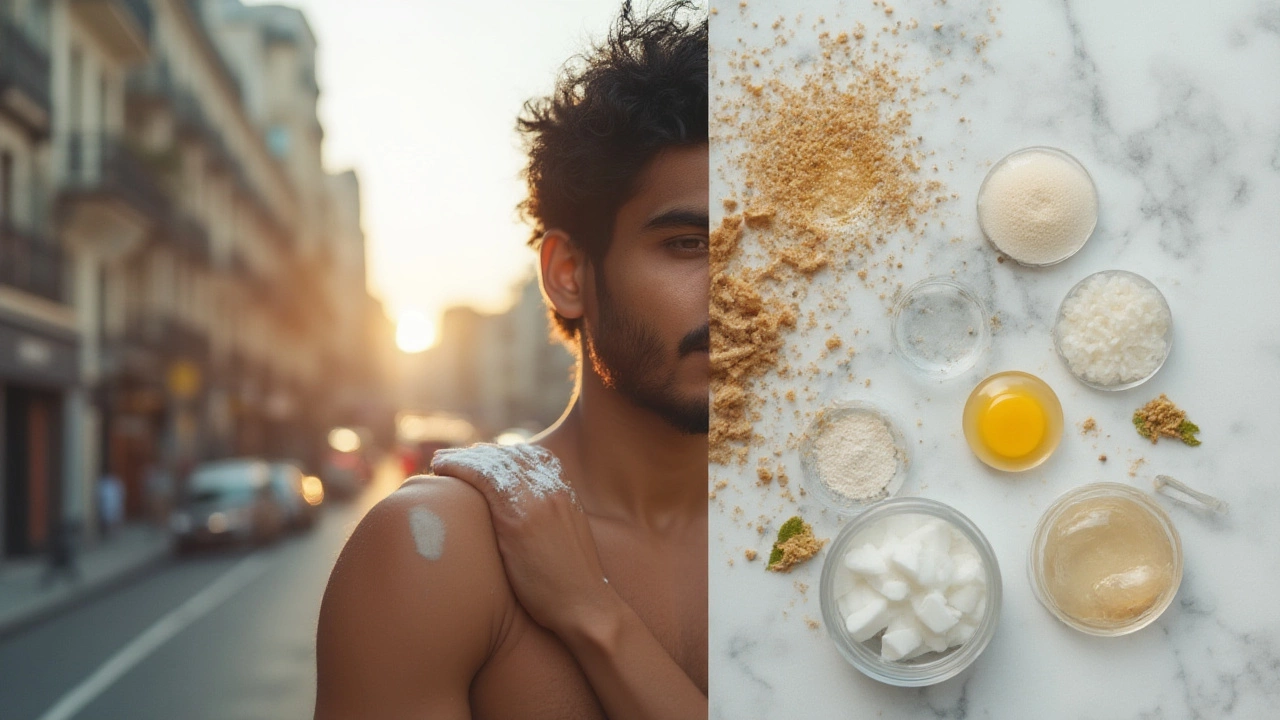
Imagine if most moisturizers weren’t all that great for your skin—the truth is, a lot of them are packed with stuff your skin doesn’t need. Parabens, mineral oils, synthetic fragrances, even alcohol that dries you out—these are common ingredients that creep into popular lotions and creams. Choosing the healthiest moisturizer is more than just grabbing the jar with the prettiest label or the highest price tag. You’d be surprised how little that Instagram favorite might actually care for your skin. The secret to truly healthy skin? It’s all about the ingredients inside and how well your skin can actually use them.
What Makes a Moisturizer Truly Healthy?
If you want your skin to thrive, you need to know what defines “healthy” in a moisturizer. It’s not just about keeping things soft and glowy for a few hours. The real deal is about locking in moisture, supporting the skin barrier, and avoiding long-term irritation. Dermatologists swear by a few basics—a mix of humectants, emollients, and occlusives. Want to break down those science-y words? Here’s the quick version:
- Humectants (like hyaluronic acid and glycerin) draw water into your skin, so they’re hydration heroes.
- Emollients (like squalane, jojoba oil, ceramides) fill in the gaps between skin cells, making everything feel silky instead of rough.
- Occlusives (think shea butter and petrolatum) act as shields to keep all that moisture from disappearing into thin air.
What you don’t want are harsh preservatives, artificial scents, and alcohols at the top of the ingredients list. According to a 2022 report from the American Academy of Dermatology, about 35% of folks who visit dermatologists for irritated skin problems are having reactions to something in their skincare product. Not great.
Certain ingredients get dermatologist gold stars—like ceramides and niacinamide. Ceramides help rebuild the skin’s barrier (think of it like patching up holes in a fence). Niacinamide is the multitasker, tackling redness, smoothing wrinkles, and even controlling oil. If you see both of these on a moisturizer, your skin’s probably in for a treat.
This is where “natural” and “clean” brands often sound good, but not all botanicals are as gentle as they seem. Essential oils such as lavender or citrus can cause allergic reactions, especially for sensitive types. Patch test if you’re unsure. Also, don’t dismiss science-backed brands just because their products aren’t loaded up with botanicals. Sometimes, a simple, fragrance-free formula does more good than an all-organic cocktail.
Let’s get real: your skin’s needs also change with the seasons and your lifestyle. Winter air (and dry indoor heating) sucks away moisture. Summer can mean more sweat and oil. Stress, hormones, and even your diet can change what type of moisturizer works best.
Here’s a fun fact: In a 2023 survey, 71% of dermatologists picked “ceramide-based moisturizers” as their top option for anyone prone to dryness or sensitivity. CeraVe and Vanicream tend to show up repeatedly on expert-recommended lists—not the fanciest jars, but the formulas simply work. For those fighting oil and breakouts, gel moisturizers starring hyaluronic acid (like Neutrogena Hydro Boost) deliver the hydration minus the greasy feel.
And remember, you don’t have to go broke chasing healthy skin. More isn’t always better. Sometimes, less really is more—fewer ingredients, fewer potential triggers.

Choosing the Right Moisturizer for Your Skin Type
Okay, let’s decode the game. The best moisturizer for you isn’t the one your best friend loves—or even the one a celeb raves about on TikTok. It’s about how your skin acts, feels, and reacts day to day. Dermatologists break it down like this:
- Dry Skin: You want hydrating powerhouses—look for formulas packed with ceramides, squalane, or shea butter.
- Oily or Acne-Prone Skin: Go for lightweight, oil-free gels or lotions with hyaluronic acid and non-comedogenic labels. Don’t skip moisturizer; oily skin still needs balance.
- Combination Skin: This is tricky, but you can mix and match—a richer cream for drier spots, a light gel for oily areas.
- Sensitive Skin: Hypoallergenic and fragrance-free win here. Products like Vanicream, La Roche-Posay Toleriane, or Avene tend to minimize reactions, thanks to minimalistic ingredient lists.
- Mature Skin: Look out for rich, nourishing ingredients like peptides, ceramides, and niacinamide—older skin needs both moisture and help with fine lines.
A moisturizer’s texture is more than a feeling; it affects effectiveness. Creams often work best for dry to normal skin, while gels absorb instantly, making them favorites for oily and combo types.
Price tag is not a measure of quality. A $200 cream can fail you just as quickly as a $12 pharmacy pick if it doesn’t suit your needs. According to a 2024 Consumer Reports review, several affordable drugstore brands (CeraVe, Neutrogena, Eucerin) outperformed luxury-priced moisturizers in both hydration and skin compatibility. So, go with what works, not just what looks fancy in your bathroom.
SPF in your daily moisturizer? Dermatologists say absolutely—but only if you use enough. A moisturizer with SPF 30 is great for daytime, but you’re better off pairing a fragrance-free moisturizer with a separate sunscreen for serious protection.
| Best Moisturizer Type | Key Ingredient | Skin Type | Dermatologist Approved |
|---|---|---|---|
| Cream with Ceramides | Ceramides | Dry, Sensitive | Yes |
| Gel with Hyaluronic Acid | Hyaluronic Acid | Oily, Combination | Yes |
| Ointment-Based | Petrolatum/Squalane | Eczema-Prone, Very Dry | Yes |
| Fragrance-Free Lotion | Niacinamide | All Types | Yes |
Watch for hype ingredients too. “Snail mucin,” “CBD extract,” and collagen-infused creams are every brand’s favorite buzzwords. While some have promising benefits, their results don’t always live up to marketing. Sometimes, a good moisturizer is as simple as keeping your skin comfortable, hydrated, and irritation-free—no fancy actives required unless you have a particular skin goal.
If you have persistent issues—like flaky patches, painful redness, or deep cracks—visit your dermatologist. Skincare isn’t one-size-fits-all, and some “moisturizers” aren’t enough to treat stubborn skin conditions.

Tips and Habits That Make Your Moisturizer Work Better
Even the healthiest moisturizer can’t work miracles if you use it the wrong way. A few habits and tweaks can take your skin from okay to seriously smooth and glowing. For starters, always put your moisturizer on slightly damp skin. Right after a shower or washing your face is perfect—this locks in extra water before it slips away.
- Use gentle cleansers to avoid stripping your natural oils; harsh soaps or cleansers with sulfates can sabotage the best moisturizer.
- Don’t over-exfoliate. Scrubbing your skin raw breaks down your barrier, making even the gentlest formula burn or sting.
- Layer products from lightest to heaviest: serums first, then moisturizer, with sunscreen as your last day step.
- Apply using clean hands. You don’t want to introduce bacteria or dirt into your moisturizer jar—think of it like double-dipping at a party (nobody wants that).
- Treat your neck and chest as extensions of your face—they age too and love moisturizer just as much as your cheeks.
- Swap formulas with the seasons. Extra rich creams in winter, lightweight gels in summer. Your skin’s cravings change.
Hydration happens on the inside too. Drinking enough water, but also eating foods rich in healthy fats—like avocados, walnuts, or salmon—makes a big difference. Your skin cells need both moisture and the right building blocks from your diet.
Storage matters. Heat, light, and air exposure break down active ingredients (like vitamin C or retinol) quickly. Keep jars tightly sealed and out of direct sunlight—your bathroom shelf may not be the best place.
One quirky trick dermatologists sometimes mention: don’t skip nighttime moisture. While you sleep, skin goes into repair mode, so a heavier overnight moisturizer (or even a simple occlusive like pure petrolatum “slugging” for dry types) helps lock in all that goodness. But go light if you’re acne-prone, to avoid breakouts.
The bottom line? Ingredients, honesty with what your skin actually needs, and building good habits all matter more than the bottle’s label or promise. Listen to your skin—it tells you what’s working. Your healthiest moisturizer is the one your skin loves coming back to again and again.
 Hair Care
Hair Care